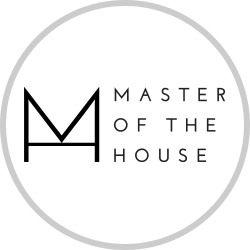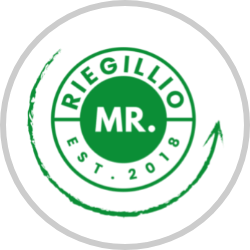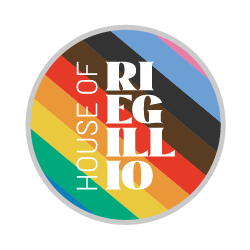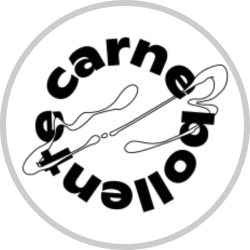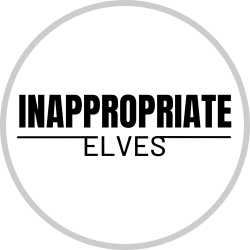MR. RIEGILLIO - YOUR PRIDE FLAG EXPERT
Pride flags are more than just colorful pieces of fabric fluttering in parades and pride events; they are potent symbols that encapsulate the diversity, history, and resilience of the LGBTQ+ community. Each flag tells a unique story, representing a spectrum of sexual orientations, gender identities, and the rich tapestry of experiences that make up this vibrant community. Whether it's the iconic rainbow flag, known globally as a beacon of LGBTQ+ pride, or the myriad of other flags each with distinct colors and patterns, these symbols serve as a testament to the ongoing fight for visibility, acceptance, and equality.
The evolution of pride flags mirrors the progress and challenges faced by the LGBTQ+ movement. From the early days of the Gay Liberation Front to the modern era of intersectional advocacy, these flags have adapted and expanded to include underrepresented groups, acknowledging the importance of inclusivity. For instance, the Progress Pride Flag incorporates stripes to represent people of color and the transgender community, recognizing that the journey towards equality is far from over and that solidarity is essential.
Beyond their role in advocacy, pride flags foster a sense of belonging and community. They are flown not just during pride month, but year-round, in homes, businesses, and public spaces, signaling safe and welcoming environments. For many, seeing their flag represented is a powerful affirmation of their identity and worth.
As we delve into the world of pride flags, we uncover a rich array of symbols, each with its own significance and history. From the nuanced shades of the bisexual flag to the bold stripes of the transgender flag, and the lesser-known but equally important flags representing asexual, pansexual, non-binary, and other identities, we appreciate the depth and diversity within the LGBTQ+ spectrum.
Understanding pride flags is not just about recognizing colors and patterns; it's about honoring the stories and struggles they represent. Each flag stands as a reminder of the courage it takes to be visible in a world that often demands conformity. It's a call to celebrate individuality, to champion inclusivity, and to continue striving for a world where everyone can live authentically and proudly.
In this overview, MR. Riegillio will serve the ultimate 'Pride Flag Expert' and will explore the meanings behind these flags, the history of their creation, and the ongoing significance they hold within the LGBTQ+ community. Whether you're a seasoned advocate or new to the world of pride flags, this exploration promises to deepen your understanding and appreciation of these powerful symbols of love, identity, and pride.

Intersex-inclusive Pride Flag
The Intersex-inclusive Pride Flag, designed by Morgan Carpenter in 2013, features a yellow background with a purple circle. Yellow symbolizes light, life, and hope, while purple represents love, uniqueness, and solidarity. The circle represents wholeness, completeness, and potentialities of intersex people. The flag aims to raise awareness of intersex rights and visibility, advocating for dignity, autonomy, and recognition within the LGBTQ+ community. It serves as a symbol of affirmation and empowerment, challenging stigma and discrimination faced by intersex individuals. The flag's design embodies the diversity and resilience of intersex people, fostering dialogue and understanding worldwide.
You can grab your own flag: here.

Progress Pride Flag
The Progress Pride Flag showcased Commons is a variant of the LGBTQ+ rainbow flag known as the "Quasar" or "Progress" variant. It retains the classic rainbow pattern but adds a black and brown chevron along the hoist side, symbolizing marginalized communities of color within the LGBTQ+ spectrum. Designed by Daniel Quasar in 2018, the flag aims to address issues of intersectionality and inclusivity within the LGBTQ+ movement. The addition of the black and brown stripes highlights the ongoing struggle for racial equality and acknowledges the diverse experiences of queer people of color, promoting unity, progress, and visibility within the community.
You can grab your own flag: here.

Rainbow Flag
The Rainbow Flag, symbolizing LGBTQ+ pride, originated in 1978 in San Francisco by Gilbert Baker. Each color represents a different aspect of the community: red for life, orange for healing, yellow for sunlight, green for nature, blue for harmony, and purple for spirit. Originally designed with eight stripes, it was later reduced to six for mass production. The flag gained global recognition as a symbol of diversity, inclusivity, and the ongoing struggle for LGBTQ+ rights. Its design has been adapted and expanded upon, reflecting the evolving landscape of sexual orientation and gender identity advocacy worldwide.
You can grab your own flag: here.

Non-binary Flag
The non-binary flag is a symbol representing individuals who identify as outside the traditional gender binary of male and female. Designed in 2014 by Kye Rowan, its colors hold specific meanings: yellow for those outside the binary, white for those with many or all genders, purple for a mix of male and female, and black for those who feel undefined. The flag aims to provide visibility, recognition, and support for non-binary people, fostering inclusivity and acceptance. It has become a prominent emblem in LGBTQ+ communities worldwide, advocating for gender diversity and challenging societal norms around gender identity and expression.
You can grab your own flag: here.

Transgender Pride Flag
The Transgender Pride Flag, created by transgender woman Monica Helms in 1999, consists of five horizontal stripes. The two blue stripes symbolize the traditional color for baby boys, while the two pink stripes represent baby girls. The white stripe in the center symbolizes those who are transitioning, gender-neutral, or intersex. The flag serves to represent and celebrate the diversity and experiences of transgender individuals, promoting visibility, acceptance, and rights within society. It has become a widely recognized symbol of transgender pride and solidarity, utilized in LGBTQ+ events and advocacy efforts worldwide to foster understanding and support for transgender rights and identities.
You can grab your own flag: here.

Bear Pride Flag
The Bear Pride Flag, created by Craig Byrnes in 1995, features horizontal stripes of colors representing different aspects of the bear community. The flag's colors include dark brown, representing fur; rust, symbolizing the community's ruggedness; and black, denoting leather and BDSM. A white stripe signifies the community's inclusivity and peace. The flag aims to provide visibility and unity for members of the bear community, promoting acceptance and celebration of diverse body types and identities within gay culture. It serves as a symbol of pride and solidarity, fostering a sense of belonging and camaraderie among bears and their allies worldwide.
You can grab your own flag: here.

Leather Pride Flag
The Leather Pride Flag, designed by Tony DeBlase in 1989, features nine horizontal stripes representing various elements of the leather community. The flag's colors hold specific meanings: black symbolizes leather and BDSM, blue signifies devotion and loyalty, and white represents purity and innocence. Additionally, the flag includes a heart-shaped emblem, symbolizing love and community. It serves as a symbol of pride, unity, and identity for individuals within the leather and BDSM communities, fostering visibility and acceptance. The flag is widely recognized and utilized in LGBTQ+ events and gatherings, representing the values of empowerment, diversity, and solidarity within the broader community.
You can grab your own flag: here.

Puppy Pride Flag
The Puppy Pride Flag, also known as the Dog Pride Flag, symbolizes inclusivity and celebration within the puppy play community. Its design features a paw print in the center, surrounded by the colors blue, black, and white. Blue represents loyalty and trust, black symbolizes dominance and submission, and white signifies purity and acceptance. The flag aims to foster a sense of unity and acceptance among individuals who engage in puppy play, a form of BDSM and role-playing where participants take on the role of puppies. It serves as a visible emblem of pride, identity, and belonging for the community it represents.
You can grab your own flag: here.

PVC Pride Flag
The PVC Pride Flag, designed by Anthony Ozorai and chosen by the community through a survey conducted by Mr. Riegillio, symbolizes the vibrant and diverse PVC fetish community. Its design is rooted in the original colors of PVC and rain gear—black, yellow, and army green—reflecting the traditional attire of fishermen and farmers. Black represents kink and vinyl, emphasizing the material's importance in fetish culture. Yellow signifies creativity, energy, and the joy of embracing this unique fetish. Army green, a blend of black and yellow, symbolizes brotherhood and the resilience to overcome adversity and oppression.
The flag features lines inspired by the chemical formula of PVC: C2H3Cl, adding a scientific touch that connects the design to its material origins. The overall aesthetic draws a parallel to the rubber flag, highlighting the shared shiny and sleek appearance of both materials. The flag stands as a beacon of solidarity, creativity, and the enduring spirit of the PVC community.
You can grab your own flag: here.

Rubber Pride Flag
The Rubber Pride Flag, created by Peter Tolos and Scott Moats in 1994, features a horizontal design with four colored stripes: black, representing the BDSM community; red, symbolizing blood, which is significant in BDSM practices; yellow, indicating urine and bodily fluids often involved in rubber and latex fetishes; and charcoal gray, representing leather and BDSM. The flag aims to provide visibility and solidarity for individuals within the rubber and latex fetish community, celebrating their identities and interests. It serves as a symbol of pride and acceptance, fostering inclusivity and understanding within the broader LGBTQ+ community and fetish subcultures.
You can grab your own flag: here.

House of Riegillio Pride Flag
The House of Riegillio Pride Flag, designed by House of Riegillio in 2023, is based on the Progress Pride Flag with unique elements representing the House's norms and values. Retaining the classic rainbow pattern and the additional colors of the Progress Pride flag chevron along the hoist side, it symbolizes marginalized communities within the LGBTQ+ spectrum. The flag aims to address issues of intersectionality and inclusivity, highlighting the struggle for equality and acknowledging the diverse experiences of queer people. It promotes unity, progress, and visibility within the community, reflecting the House of Riegillio's commitment to these principles.
You can grab your own flag: here.

SNKRFTSH Flag
The SNKRFTSH Pride Flag, designed by MR. Riegillio, symbolizes the passion and community of sneaker lovers, collectors, and enthusiasts. The flag features a sleek black and white design with the logo "SNKRFTSH" prominently displayed in the center. Between the letters "R" and "F," a star symbol represents the shine and allure of coveted sneakers.Black embodies the elegance and sophistication of high-end sneaker culture, while white symbolizes purity and the unblemished desire for the perfect pair. The flag not only represents the love for sneakers as collectibles and streetwear but also acknowledges the deeper fetishistic passion some individuals have for them.The SNKRFTSH Pride Flag aims to foster a sense of unity and identity among sneaker aficionados, celebrating their shared enthusiasm and dedication. It serves as a visible emblem of pride, community, and the unique culture that surrounds sneaker fandom
You can grab your own flag: here.

Abrosexual Pride Flag
The Abrosexual Pride Flag represents individuals who identify as abrosexual, a term describing fluid or shifting sexual orientations. Designed in 2018 by an anonymous creator on Tumblr, the flag features five horizontal stripes: light gray, representing identities outside the norm; white, symbolizing the spectrum of sexual orientations; green, signifying growth and change; yellow, representing non-binary and non-traditional genders; and purple, symbolizing the connection between the sexual and romantic aspects of identity. The flag aims to provide visibility, recognition, and solidarity for abrosexual individuals, fostering acceptance and understanding within both LGBTQ+ communities and society at large.
You can grab your own flag: here.

Agender Pride Flag
The Agender Pride flag, introduced in 2014, consists of four horizontal stripes: black, light gray, white, and green from top to bottom. Each color holds significant meaning: black represents the absence of gender, gray signifies semi-genderlessness, white symbolizes all genders, and green represents non-binary genders. The flag embodies the agender community's identity, recognizing individuals who don't identify with any specific gender. It serves as a symbol of visibility, acceptance, and solidarity for agender individuals, promoting understanding and inclusivity within society. Through its design and symbolism, the flag advocates for gender diversity and challenges traditional binary concepts of gender.
You can grab your own flag: here.

Ally Flag
The Ally Flag represents individuals who support LGBTQ+ rights and equality. Its design, consisting of three horizontal stripes of black, gray, and white, symbolizes the heterosexual community's solidarity with the LGBTQ+ community. Created by an unknown individual, the flag serves as a visible symbol of allyship, acceptance, and advocacy. Straight allies play a crucial role in promoting inclusivity and challenging discrimination based on sexual orientation and gender identity. The flag fosters visibility and recognition of their efforts, encouraging others to join the fight for LGBTQ+ rights. It embodies the principles of solidarity, support, and allyship within diverse communities.
You can grab your own flag: here.

Aromantic Pride Flag
The Aromantic Pride Flag, designed by Tumblr user Cameron Whitt in 2014, consists of four horizontal stripes: dark green, representing the aromantic spectrum; light green, symbolizing the aromantic community; white, representing platonic and aesthetic attraction; and gray, symbolizing the spectrum of sexuality. The flag aims to provide visibility and representation for individuals who experience little to no romantic attraction. It serves as a symbol of pride, solidarity, and acceptance within the LGBTQ+ community, fostering understanding and support for aromantic identities. The flag has become a recognized symbol internationally, used in LGBTQ+ events and advocacy efforts to promote awareness and inclusion.
You can grab your own flag: here.

Asexual Pride Flag
The Asexual Pride Flag, designed by AVEN user standup in 2010, serves as a symbol of the asexual community's visibility and identity. Its four horizontal stripes represent different aspects of asexuality: black symbolizes asexuality, gray represents gray-asexuality and demisexuality, white symbolizes sexuality, and purple signifies community. The flag aims to raise awareness and promote acceptance of asexuality as a valid sexual orientation, emphasizing the spectrum of human sexuality beyond conventional norms. It fosters solidarity, support, and understanding within the LGBTQ+ community and beyond, providing individuals with a tangible symbol of pride, representation, and belonging.
You can grab your own flag: here.

Bisexual Pride Flag
The Bisexual Pride Flag is a symbol of visibility and acceptance for individuals who identify as bisexual. Designed by Michael Page in 1998, its three horizontal stripes represent various aspects of bisexuality: pink symbolizes attraction to the same gender, blue represents attraction to the opposite gender, and the overlap of the two colors creates a lavender stripe, symbolizing attraction to both genders. The flag aims to combat stigma and promote understanding of bisexuality as a valid sexual orientation, fostering inclusivity and support within the LGBTQ+ community and beyond. It serves as a powerful emblem of pride, identity, and solidarity.
You can grab your own flag: here.

Demiromantic Pride Flag
The Demiromantic Pride Flag, created by "kittybot" on Tumblr in 2014, consists of five horizontal stripes: black, gray, white, gray, and black. Each color holds significance, representing different aspects of demiromantic identity. Black symbolizes asexuality, gray represents the gray area between sexual and asexual attraction, white signifies romantic attraction, and the repeating gray stripes represent the spectrum of attraction. The flag aims to provide visibility and representation for individuals who experience romantic attraction only after forming a strong emotional bond. It serves as a symbol of pride, acceptance, and recognition within the LGBTQ+ community, emphasizing diversity and inclusivity.
You can grab your own flag: here.

Demisexual Pride Flag
The Demisexual Pride Flag, created by an anonymous user on Tumblr in 2010, features three horizontal stripes: a black stripe representing asexuality, a gray stripe symbolizing gray-asexuality and demisexuality, and a white stripe signifying sexuality. The flag aims to provide visibility and representation for individuals who experience sexual attraction only after forming a strong emotional bond. It serves as a symbol of pride, acceptance, and recognition within the LGBTQ+ community, emphasizing the diversity of sexual orientations and promoting inclusivity. The flag has gained recognition internationally, being used in LGBTQ+ events and advocacy efforts to support demisexual individuals.
You can grab your own flag: here.

Drag Pride Flag
The Drag Pride flag, unveiled in June 2023, symbolizes the diversity and unity within the drag community. Its design incorporates vibrant colors and meaningful symbols: a high-heeled shoe, a makeup brush, and a lipstick. The flag celebrates the artistry, self-expression, and resilience of drag performers worldwide. The shoe represents empowerment, the brush signifies creativity, and the lipstick symbolizes confidence. By embracing these elements, the flag embodies the essence of drag culture, fostering inclusivity, visibility, and pride. It serves as a powerful symbol of acceptance and solidarity, reflecting the ongoing evolution and vibrancy of the drag community.
You can grab your own flag: here.

Genderfluidity Pride Flag
The Genderfluidity Pride Flag, depicted on the Wikipedia page, is a symbol representing the genderfluid community. Created by JJ Poole in 2012, it features five horizontal stripes: pink for femininity, white for all genders, purple for a combination of masculinity and femininity, black for lack of gender, and blue for masculinity. The flag reflects the fluidity of gender identity, emphasizing diversity and inclusion. It serves as a powerful emblem of pride and visibility for genderfluid individuals, promoting acceptance and understanding within the LGBTQ+ community and society at large. The flag symbolizes the fluidity and complexity of gender expression and identity.
You can grab your own flag: here.

Genderqueer Pride Flag
The Genderqueer Pride Flag, designed in 2011 by Marilyn Roxie, consists of three horizontal stripes: lavender, white, and green. Lavender represents androgyny and queerness, white symbolizes agender identity, and green signifies those outside the traditional gender binary. The flag aims to provide visibility and support for genderqueer, non-binary, and gender non-conforming individuals. It serves as a symbol of pride, empowerment, and acceptance within the LGBTQ+ community, challenging societal norms around gender. The flag has gained recognition internationally, being used in LGBTQ+ events and activism to promote inclusivity, understanding, and affirmation of diverse gender identities and expressions.
You can grab your own flag: here.

Lesbian Pride Flag
The Lesbian Pride Flag 2019, designed by Emily Gwen in 2018, features horizontal stripes: six shades of pink and a white stripe in the center. Each shade of pink represents different aspects of lesbian identity and experience, including community, independence, and serenity, while the white stripe signifies gender inclusivity and intersectionality. The flag aims to provide visibility and representation for lesbians, promoting unity, acceptance, and celebration of diverse identities within the LGBTQ+ community. It serves as a symbol of pride and solidarity, empowering lesbians and advocating for their rights and recognition worldwide in LGBTQ+ events and activism.
You can grab your own flag: here.

Pansexual Pride Flag
The Pansexual Pride Flag is a symbol representing the pansexual community, designed by Jasper V. in 2010. It consists of three horizontal stripes: pink, yellow, and blue. Pink represents attraction to people of all genders, blue symbolizes attraction to people of any gender, and yellow represents attraction to non-binary individuals and those who identify outside the gender binary. The flag aims to promote visibility, acceptance, and understanding of pansexuality as a valid sexual orientation, advocating for inclusivity and recognition of diverse forms of attraction beyond traditional binary categories. It serves as an emblem of pride, identity, and unity within the LGBTQ+ community.
You can grab your own flag: here.

Polyamory Pride Flag
The Polyamory Pride Flag is a symbol of the polyamorous community, representing love and relationships beyond traditional monogamy. It consists of three horizontal stripes:
Blue - representing openness and honesty
Red - symbolizing love and passion
Purple- signifying solidarity with those who must hide their polyamorous relationships due to societal norms.
The new polyamory pride flag, updated and introduced in 2022, features a design aimed at inclusivity and visibility for the polyamorous community.
You can grab your own flag: here.

Polysexuality Pride Flag
The Polysexuality Pride Flag, designed by an anonymous user on the webcomic "Graphic Novelty" in 2012, features three horizontal stripes: pink, representing attraction to females; blue, symbolizing attraction to males; and yellow, signifying attraction to non-binary or other genders. The flag aims to provide visibility and representation for individuals who experience attraction to multiple genders but not all. It serves as a symbol of pride, acceptance, and recognition within the LGBTQ+ community, emphasizing the diversity of sexual orientations and promoting inclusivity. The flag has gained recognition internationally, being used in LGBTQ+ events and advocacy efforts to support polysexual individuals.
You can grab your own flag: here.

Pride of Africa Flag
The "Pride of Africa" flag is a vibrant symbol created by Joe Public United for Africa's LGBTQ+ community. Featuring the continent's silhouette in bold rainbow hues, it celebrates diversity and inclusivity across Africa. Designed to promote unity, acceptance, and visibility, the flag embodies the spirit of pride and resilience within LGBTQ+ communities despite cultural and legal challenges. It serves as a rallying symbol for advocacy and social change, challenging stigma and discrimination. Embracing the colors of the rainbow, it represents the beauty and richness of Africa's diverse identities, fostering a sense of belonging and empowerment among LGBTQ+ individuals and allies across the continent.
You can grab your own flag: here.

Queer People of Color Flag
The Queer People of Color Flag is a symbol of visibility, empowerment, and solidarity within the LGBTQ+ community, specifically representing queer people of color. Designed by the collective known as "Queer POC," the flag features horizontal stripes of black, brown, blue, and white. Black and brown stripes represent people of color, blue symbolizes LGBTQ+ communities, and white represents those who are intersex, transitioning, or consider themselves allies. Introduced in 2018, the flag aims to address the unique challenges faced by queer people of color, promote inclusivity, and celebrate diversity. It serves as a powerful emblem of pride, identity, and resilience.
You can grab your own flag: here.

Trans-inclusive Gay Men's Flag
The Trans-inclusive Gay Men's Flag is a symbol designed to represent gay men who are inclusive of transgender individuals within the LGBTQ+ community. Created by a team of activists in 2018, it features the traditional rainbow pride colors with additional stripes of light blue, pink, and white. The flag aims to acknowledge and support transgender men within the broader gay community, promoting unity, visibility, and acceptance. By incorporating the colors associated with transgender pride, it seeks to foster solidarity and understanding, emphasizing the importance of inclusivity and intersectionality within LGBTQ+ spaces and advocacy efforts.
You can grab your own flag: here.

Two-Spirit Pride Flag
The Two-Spirit Pride Flag is a symbol representing Indigenous LGBTQ+ individuals who embody both masculine and feminine qualities, as well as spiritual roles within Indigenous cultures. Created in 2017 by Shawnee and Navajo artist and activist, Jolene Yazzie, the flagincorporates colors significant to Indigenous peoples: turquoise, representing balance andmasculinity; purple, symbolizing femininity and community; and yellow, embodying the non-binary and intersex spectrum. The flag serves to honor and empower Two-Spirit people, reclaiming their identity and heritage while advocating for visibility, respect, and acceptance within both Indigenous communities and the broader LGBTQ+ movement, promoting cultural diversity and inclusion.
You can grab your own flag: here.

